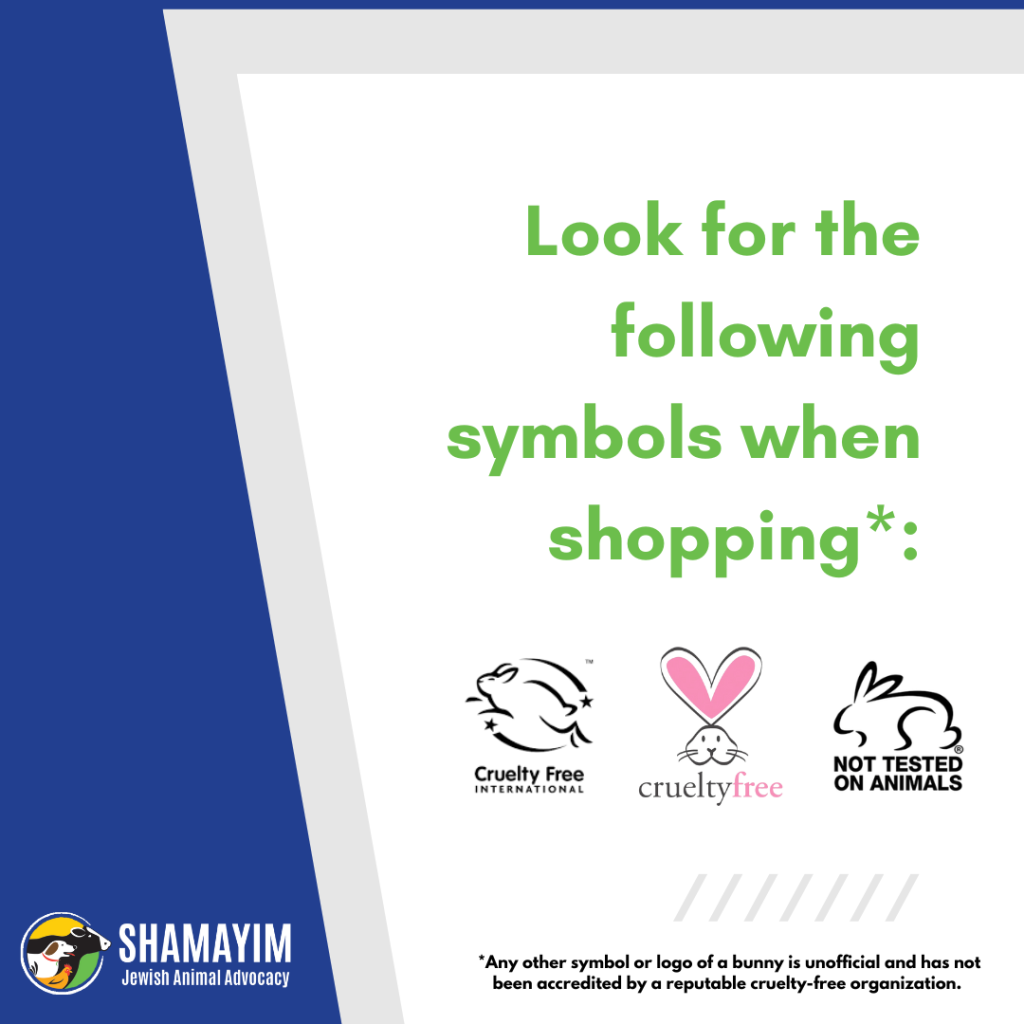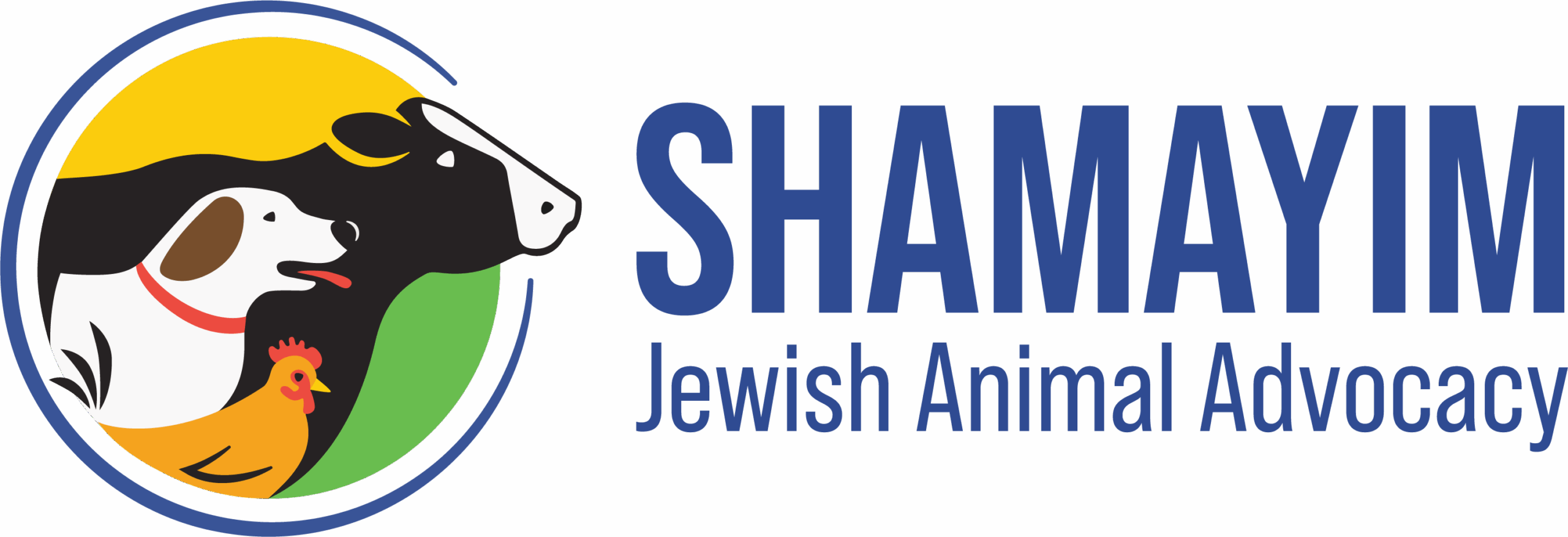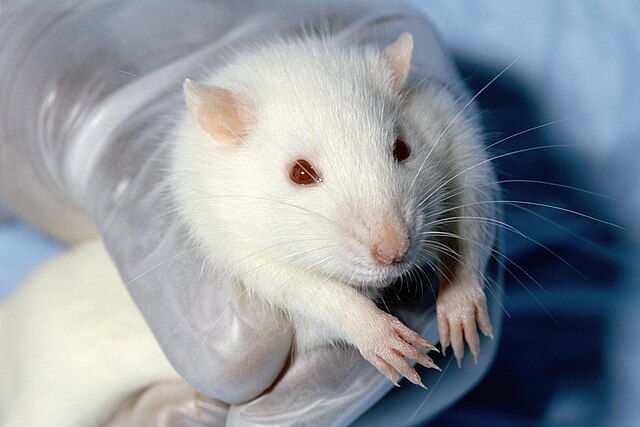You would think that in today’s rapidly evolving technological landscape, the inhumane practice of animal testing would be a thing of the past. We know about the painful realities these innocent animals are put through, and not just for the name of science.
Many companies in the cosmetics industry are still emboldened both federally and internationally to continue animal testing, selling beauty at the expense of another being’s life. But according to both modern science and Midrash teachings, it doesn’t have to be this way.
The Awful Truth of Animal Testing
Eye-irritant experiments, force-feeding, and lethal-dose protocols—these are just some of the harrowing procedures animals endure all for the latest lipstick shades or shampoo fragrances. Rabbits, mice, and other beings may have chemicals dripped directly into their eyes or be forced to ingest substances until half of them die, as seen in the LD50 tests.
In the United States alone, People for the Ethical Treatment of Animals (PETA) estimates that over 110 million animals are subjected to lab experiments each year, with a significant portion owed to cosmetics.1 Globally, Cruelty Free International reports that around 80% of countries still allow animal testing for beauty products.2
This is all the more astonishing when you consider that modern, cruelty-free methods—ranging from in vitro testing using human cell cultures to advanced computer modeling—often produce results that are far more accurate.
Cruelty-Free Testing: The New Gold Standard
Did you know animal testing isn’t as reliable as we thought it was? Many experts in computational toxicology and biomedical engineering point out that the predictive power of animal tests can be surprisingly limited when it comes to human outcomes.
Modern cruelty-free methods often utilize human-derived cells and sophisticated computer modeling, making them more directly applicable to human biology. A study cited by the Physicians Committee for Responsible Medicine (PCRM) indicates that validated non-animal methods, such as 3D tissue models, have a strong track record for accurately predicting human reactions.3 Additionally, computer modeling and quantitative structure-activity relationship (QSAR) analyses use large datasets to predict how certain chemical structures will affect biological systems.
Knowing the stomach-churning truth of animal testing—and the fact that effective cruelty-free testing alternatives exist— how could a brand in today’s age who aims to represent “beauty” and “self-care,” utilize a practice so ugly and inhumane?
Why Companies Still Use Animal Testing
It’s easy to wonder why anyone would continue animal testing, especially when the consumer demand is shifting quickly and at this point … it just seems like bad business. But the way things are set up makes it easy for these companies to do things the way they always have. Even in 2025, according to the U.S. Food and Drug Administration (FDA), there is no comprehensive federal prohibition on animal testing for cosmetics in the United States.
And many corporations look at regulatory uncertainties and cost concerns as reasons they haven’t switched to cruelty-free methods. Adapting an entire product pipeline can be expensive, and differing standards in international markets — specifically in countries like China, where imported cosmetics traditionally required animal testing — add complexity to the equation.
In addition to these regulatory hurdles, there’s institutional inertia. The cosmetics industry has relied on animal tests for decades, and pivoting to new methods demands investment in research, staff training, and technology. In their eyes, it’s easier to continue to subject animals to testing and abuse and there is no accountability.
But as Jews, we do not need government law to hold ourselves accountable for what we put on our skin and in our hair.
Ethical Beauty and Tza’ar Ba’alei Chayim
Just look at the words of Hashem and sages through generations. The principle of tza’ar ba’alei chayim forbids causing unnecessary pain to animals. It doesn’t end there … you can find evidence of animal compassion through every turn of the scriptures.
Deuteronomy 25:4 forbids muzzling an ox while it threshes grain, ensuring the animal can eat if hungry. In Talmud, Bava Metzia 32b, it demands that one help relieve an animal’s burden, even if owned by an adversary. Of course, the Minchat Chinuch (80) teaches: “There is not only a prohibition of causing pain to animals, but there is also an obligation to prevent their pain wherever possible.”
It’s no question the vegan values that lie within the Torah and scriptures, which has us take a look at the choices in all areas of our lives. But what if we weren’t talking about cosmetics? What if we were talking about something a bit more … life-or-death?
When Animal Testing is Permissible
So when should we turn a blind eye, and find it acceptable to use animals in testing? Of course, there is a balance between life-saving research and non-essential testing. Halakha offers us a way to navigate these nuances.
The tension between tza’ar ba’alei chayim and the needs of human health has prompted considerable debate in Jewish law. Pikuach nefesh—the duty to save a human life—can override many prohibitions, including those related to animal welfare. This principle is often cited when discussing life-saving medical research, such as development of treatments for cancer, vaccines for deadly diseases, or new surgical procedures. According to renowned Jewish philosopher, Rambam, if the potential to save human lives is both realistic and significant, the temporary harm caused to animals may be deemed permissible within strict guidelines.
It’s a choice we shouldn’t have to make—choosing the life of a human or an innocent animal. But hopefully with the advancement of AI and expanding medical research, there will be more cruelty-free testing opportunities for both critical and non-critical needs.
Cruelty-Free on the Rise
The future of cruelty-free cosmetics is looking bright. It’s no secret that many cosmetic companies are making the switch—or at least expanding their lines—to offer cruelty-free options as consumer attitudes are shifting. A 2021 Nielsen survey found that 57% of U.S. consumers actively look for “cruelty-free” labels on their beauty products.4 The cruelty-free revolution is here, and the global market is set to reach roughly $20.8 billion in 2025.5
Beyond consumer preferences, legislation is also fueling this movement. Despite no federal law prohibiting animal testing, several U.S. states—including California, Nevada, Illinois, Maryland, Maine, Hawaii, New Jersey, and Virginia—have stood up and enacted laws restricting or banning the sale of cosmetics tested on animals.
Working parallel with these efforts, grassroot and bipartisan government organizations like the White Coat Waste Project continue to expose companies and stop funding for animal testing in the U.S.
With continued consumer awareness, supportive legislation, and advancements in alternative testing methods, the cruelty-free cosmetics industry is surging and shows no signs of slowing down.
Tips for Shopping Cruelty-Free Products
If you’re shopping for a cruelty-free product, one of the most trusted resources is the Leaping Bunny certification. Leaping Bunny offers a comprehensive list of cruelty-free brands and enforces rigorous standards, ensuring that no new animal tests are conducted at any stage of product development. You’ll often see a small leaping-bunny icon on certified products—but be aware of fake or look-alike logos.
Here are some ways you can make sure you spot an authentic cruelty-free logo:
Look for “Leaping Bunny” or “Cruelty Free International.” Official Leaping Bunny certifications explicitly mention the Leaping Bunny Program or Cruelty Free International. If the product packaging simply shows a random bunny image with “not tested on animals,” it might not be a valid certification.

Visit the official websites of Leaping Bunny or Cruelty Free International, or PETA’s Beauty Without Bunnies. They maintain up-to-date lists of certified brands, so you can verify quickly if a company truly meets cruelty-free criteria.
Beware of vague terms and phrases like “Against Animal Testing” or “We do not test finished products on animals” as they can be misleading. Some companies outsource or commission third parties to test raw ingredients, avoiding direct responsibility.
Beauty Beyond the Face
The topic of animal testing is extremely nuanced. Case by case, we need to look at the circumstances and ask ourselves “Is this a want or a need?”
While pikuach nefesh may permit strictly regulated animal testing for genuinely life-saving medical research, we can all agree … there’s nothing life-saving about cosmetics. It’s the want vs. the need that determines the justification of our actions.
Especially with the continuation of advanced alternatives— from 3D tissue models to organ-on-a-chip devices—which are already surpassing the efficacy of traditional animal tests. The choice is simple.
By supporting verified cruelty-free brands and learning to spot genuine logos like the Leaping Bunny, we exercise our power as consumers to drive lasting change and make a purchase with compassion. Companies will pay attention and have no choice but to join the cruelty-free revolution.
Because in the end, compassion is radiant—not just on the outside, but from the inside out.
You can pledge your commitment to compassion by signing on to the Shamayim Cruelty Free Pledge, as well as find more tips and tricks for making the switch.
Cover photo of rat by Janet Stephens on wikimedia commons (photographer)
- PETA, “Animal Experiments: Overview,” https://www.peta.org/issues/animals-used-for-experimentation/animals-used-experimentation-factsheets/animal-experiments-overview/.
↩︎ - Cruelty Free International, “What Is the Leaping Bunny?” https://crueltyfreeinternational.org/leaping-bunny-programme/what-leaping-bunny. ↩︎
- Physicians Committee for Responsible Medicine, “Animal Testing and Alternatives,” https://www.pcrm.org/ethical-science/animal-testing-and-alternatives.
↩︎ - Jessica Russo, “Package This: Beauty Consumers Favor ‘Cruelty Free’ and ‘Natural’ Product Claims,” Nielsen, March 24, 2015, http://www.nielsen.com/us/en/insights/news/2015/package-this-beauty-consumers-favor-cruelty-free-and-natural-product-claims.html.
↩︎ - Statista, “Global Vegan Cosmetics Market Size 2018–2025,” https://www.statista.com/statistics/943721/vegan-cosmetics-market-value-worldwide/. ↩︎





Leave a Reply